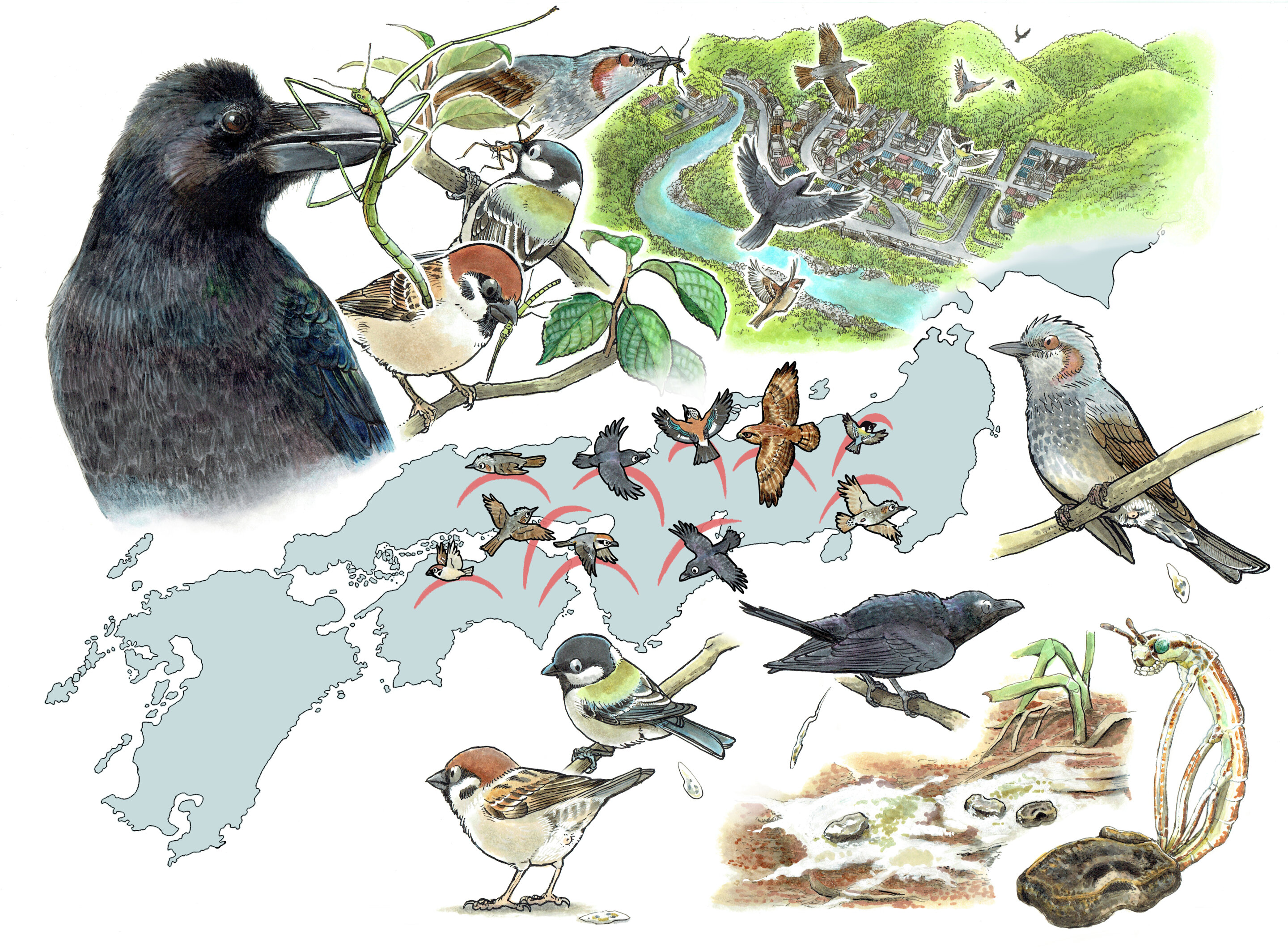Relationship patterns among flightless stick insects suggest that birds disperse the eggs after eating gravid females. Lab experiments previously suggested the possibility, but a new genetic analysis of natural populations in Japan by Kobe University researchers now supports the idea.
Most species of stick insects are flightless, yet they are distributed over wide distances and across geographical features that would impede the expansion of flightless animals. This has caused researchers to speculate that their eggs might be dispersed by birds feeding on gravid females, much in the same way as many plant species rely on birds eating their seeds together with fruits and dispersing them while the seeds pass through the digestive tracts of the birds unharmed.
Experimental studies with Ramulus mikado, a common stick insect in Japan, had suggested that this is possible, but since direct observation of such an event in nature is highly unlikely, it has been unclear whether this mechanism actually contributes to the distribution of the insect.
Kobe University biologist Suetsugu Kenji and his team therefore turned to the analysis of the relationship patterns of Ramulus mikado populations. He explains, “We made use of the idea of genetic isolation by geographic distance.”
“According to this idea, when individual dispersal distances are smaller, such as in flightless insects, the accumulation of genetic mutations eventually leads to a positive correlation between genetic differentiation among locations and the geographic distance that separates them.” Thus, the genetic variation between different populations can be a proxy for the species’ rate of dispersal.
2023-10-11 05:48:03
Source from phys.org
